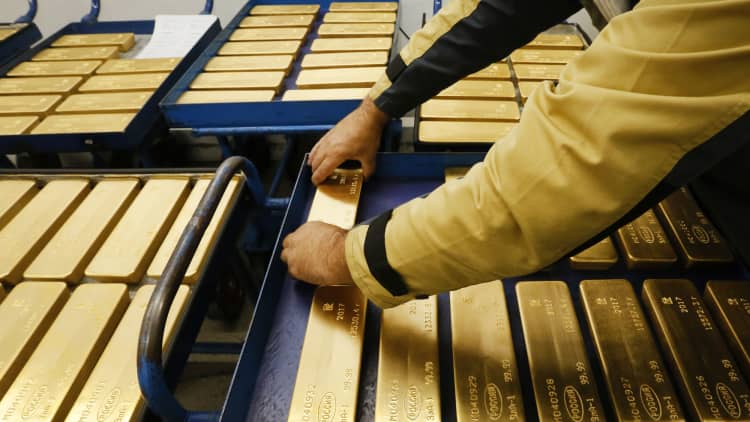
While economists parse through every word from the Federal Reserve in the hopes of figuring out where interest rates are headed, a more telling indicator may be found in the commodities market; and it's likely pointing to growth ahead.
The copper-gold ratio, a metric that is calculated by dividing the price of copper by the price of gold, is surging.
Some investors — including so-called bond king and influential investor Jeffrey Gundlach of DoubleLine Capital — watch this indicator closely for clues on inflation, as demand for copper is often a reliable indicator of global growth.
"We've seen copper futures push up to higher levels, while gold futures are starting to back off. What that would indicate here is that we're in a growth-type environment," Phil Streible, senior market strategist at RJO Futures, said Thursday on CNBC's "Trading Nation."
"Generally, if copper prices rise while gold futures fall, it's a sign of a growing global economy," he said, while the opposite typically indicates a contraction.
Copper/gold ratio, 1-year
Source: FactSet
In other words, when copper is rising and gold is falling, the economic backdrop is relatively healthy and inflation may soon follow. The copper-gold ratio traditionally closely tracks interest rates.
However, as of late the ratio has risen faster than rates have, a development that could portend higher rates.
"Large movements in either one of these commodities can really give you clues as to what overnight developments had occurred," Streible added, referring specifically to rising gold prices traditionally pointing to a pickup in global geopolitical tension.





